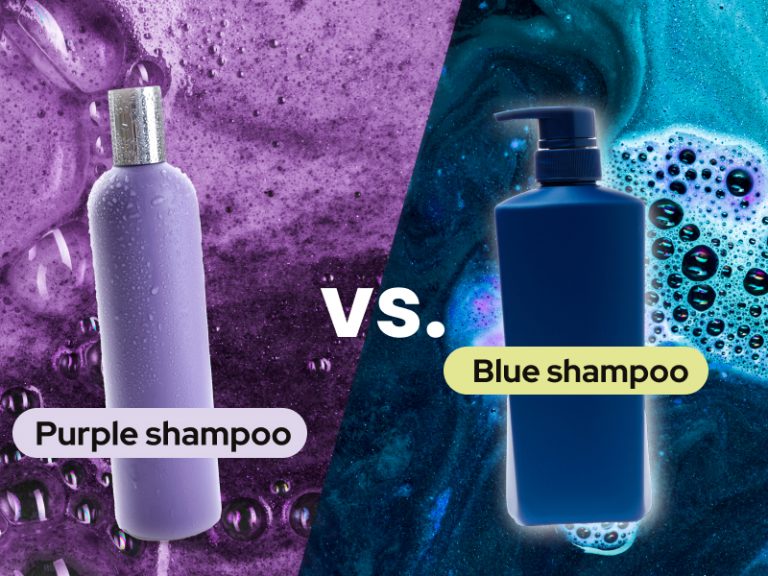Table of Contents
Are you tired of brassy or unwanted undertones affecting your beautiful hair color? Look no further – Blue shampoos and/or purple shampoos are toning shampoos and they are here to save the day!
As you dye your hair, it’s common to notice undesirable yellow, orange, or red hues emerging in your locks as time passes. Thankfully, you can address this brassiness by utilizing a toning shampoo. But, what is a toning shampoo? which one is the best for you? Blue Shampoo or Purple Shampoo?
Choosing between blue shampoo and purple shampoo is essential for vibrant and balanced hair color and involves considering factors like hair color and type, determining the desired tone correction, checking for color-correcting ingredients, etc.
If you want to find the differences between blue and purple shampoo, when to use them, and how to choose the right one for your hair, keep reading our blog.
Blue shampoo and Purple shampoo: How do they work?
Toning shampoos are hair care products designed to help neutralize or adjust the tone of the hair, particularly for blonde, gray, silver, or highlighted hair.
Blue and purple shampoos are toning shampoos that work by neutralizing unwanted tones in the hair, especially in blonde, gray, or highlighted hair. They are particularly effective against yellow and orange tones that may arise due to hair oxidation, sun exposure, pollution, or chemical products.
The science behind these toning shampoos involves the principle of complementary colors. Complementary colors are opposite colors on the color wheel, and when combined, they neutralize each other.
In the case of hair, blue and purple tones are used to neutralize unwanted yellow and orange tones, as they are located in opposite positions on the color wheel.
It’s important to note that these shampoos do not change the hair’s natural color but rather help to maintain or enhance the desired color by eliminating unwanted tones.
What is purple shampoo and how does it neutralize yellow tones?
Purple shampoos are designed for blonde, silver, or lightened hair to counter yellow or brassy undertones through the application of purple pigments, which stand opposite yellow on the color wheel.
Purple shampoo works by neutralizing and toning down brassy or yellow tones in blonde, silver, or gray hair. It contains violet or purple pigments that counteract the unwanted warm tones caused by oxidation or exposure to elements like sunlight, chlorine, or hard water.
As explained above, the purple pigments work to counteract those harsh yellow tones, as purple and yellow are the exact opposite on the color wheel.
Even for those with natural blonde hair, these shampoos serve as a gentle enhancer, elevating color without causing damage.
The potential drawbacks of purple shampoo
Purple shampoo, also known as violet shampoo, although effective for neutralizing brassiness in light hair, may have some drawbacks:
- Over-toning: as happens with blue shampoo, using violet shampoo too often or leaving it on too long can lead to a purple or gray tint, especially on light or porous hair.
- Drying effect: some formulas strip natural oils, causing dryness and potential damage. To avoid this, look for sulfate-free options or those with moisturizing ingredients.
- Color build-up: regular use can result in violet pigment build-up, requiring clarifying treatments.
- Not for all hair types: darker hair may be dulled or darkened instead of toned. Consider your hair color before using.
Related content: The best hair moisturizers
To consider
Follow the instructions provided on the label of shampoo. It’s always recommended to follow the brand’s instructions to avoid over-toning, dryness, and color build-up.
And don’t forget that purple shampoo is designed for blonde, silver, or lightened hair to counter yellow or brassy undertones.
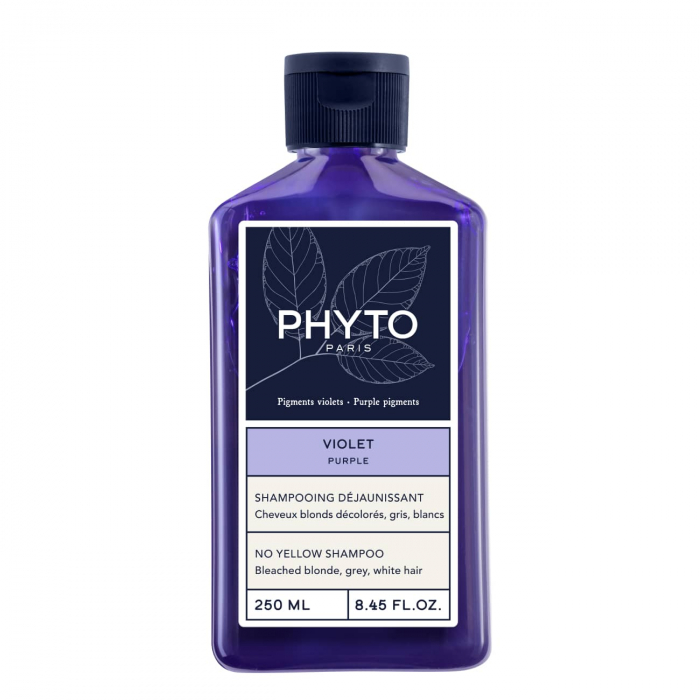
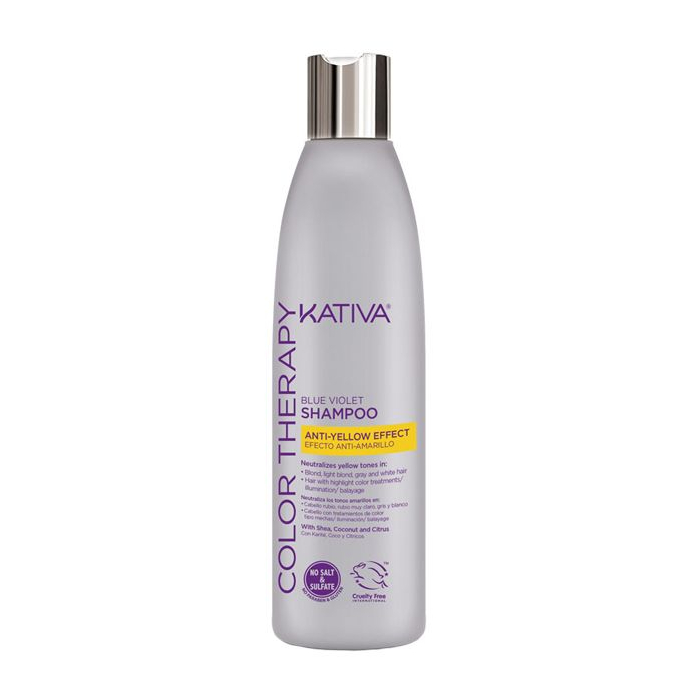

What is blue shampoo and how does it work?
The blue shampoo is formulated to tackle brassy or orange tones, making it effective for those with blonde or light brown hair by using its opposite color on the color wheel to neutralize warmth.
A blue-based color deposit in this shampoo aids in neutralizing brassy tones commonly found in darker blonde and light brown hair, providing effective cleansing, particularly beneficial for lightened hair prone to brassiness caused by factors like build-up, sun exposure, and excessive use of hot tools.
Potential drawbacks of using blue shampoo
While blue shampoo is generally considered a safe and effective solution for combating unwanted brassy tones in blonde or light brown hair, there are potential pitfalls if not used correctly.
Overtoning may occur if the shampoo is applied too frequently or left on for extended periods, resulting in a bluish or purple tint, especially for those with lighter shades. To prevent this, it’s crucial to adhere to the recommended usage instructions provided by the product.
Additionally, some blue shampoos containing potent color-depositing agents may contribute to dryness when used excessively, emphasizing the need to balance their use with a hydrating conditioner.
To consider
Care should be taken during application to avoid staining on lighter-colored fabrics or surfaces, necessitating thorough rinsing.
It’s essential to recognize that blue shampoo is tailored for blonde or light brown hair and may not yield desired results on darker hair tones, potentially affecting the natural color.
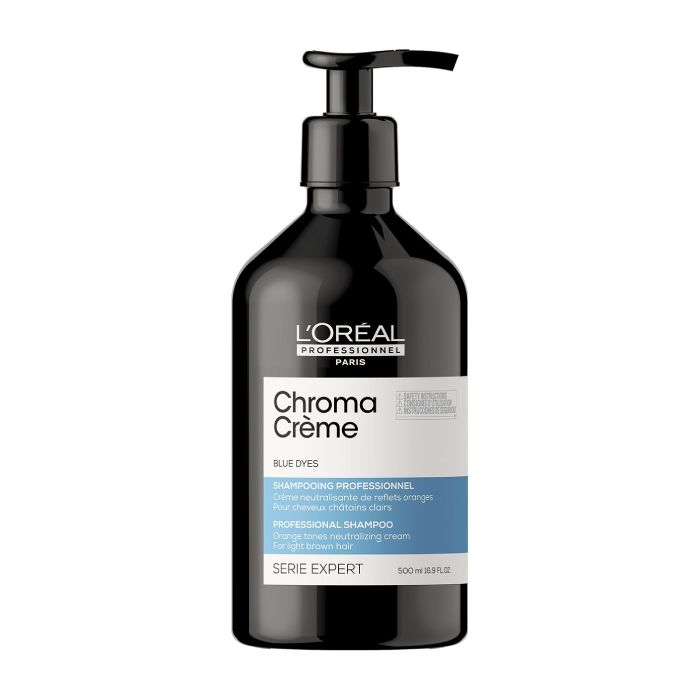

Blue shampoo vs purple shampoo: What are the differences?
A. Toning mechanism
Blue shampoo targets brassy tones, particularly those with orange or yellow undertones, by depositing blue pigments that neutralize the warm hues.
Purple shampoo, on the other hand, is designed to counteract yellow tones in light-colored hair by depositing purple pigments, resulting in a cooler, ashier shade.
B. Hair color suitability
Blue shampoo is most effective for blonde hair, especially those with highlights or balayage, as it helps combat brassiness and maintain a cooler tone.
Purple shampoo, on the other hand, is ideal for light-colored hair such as blonde, silver, or gray, as it helps neutralize yellow tones and maintain a clean, vibrant hue.
C. Intensity of toning
The intensity of toning provided by blue and purple shampoos varies based on the concentration of pigments and the duration of use.
Blue shampoo tends to offer a subtle toning effect, suitable for maintaining cool tones in blonde hair without overdoing it.
Purple shampoo, on the other hand, can provide a more pronounced toning effect, making it suitable for those seeking to neutralize stronger yellow undertones.
| Aspect | Blue Shampoo | Purple Shampoo |
|---|---|---|
| Toning mechanism | Targets orange or yellow undertones with blue pigments | Neutralizes yellow tones with purple pigments |
| Hair color suitability | Most effective for blonde hair, especially highlights or balayage | Ideal for light-colored hair like blonde, silver, or gray |
| Intensity of toning | Offers subtle toning effect | Can provide a more pronounced toning effect |
| Consideration | Suitable for maintaining cool tones in blonde hair | Suitable for neutralizing stronger yellow undertones |
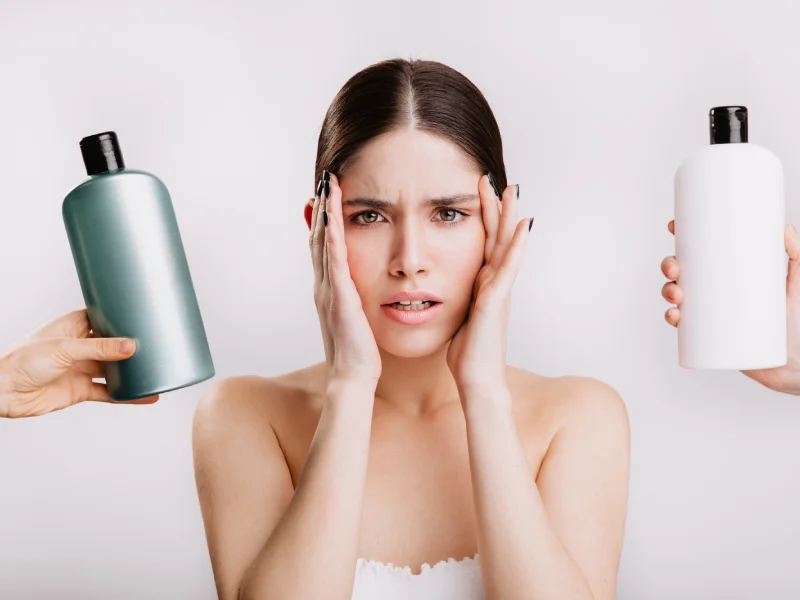
Blue shampoo vs Purple shampoo: Finding the best for you!
- Identify the specific tones in your hair that require correction
Toning shampoos are effective in addressing brassiness across various hair colors. When selecting a toning shampoo, it is crucial to pinpoint the color tones you intend to correct.
Evaluate your hair under both natural and artificial lighting in front of a mirror to identify the tones you want to eliminate:
- For blonde and gray hair, brassiness often manifests as yellow or gold tones. Depending on the specific shade of blonde, orange, copper, or red tones may emerge as the color becomes brassy.
- Dark hair with highlights may exhibit a brassy orange or red appearance.
If you need more clarification about the tones in your hair, seek guidance from a professional hairstylist.
- Choose the right toning shampoo
Once you have identified the undesirable color tones, the selection of a toning shampoo becomes more straightforward.
Utilize the color wheel to determine the opposite color pigment needed to neutralize the brassy tones in your hair. After that, you just have to choose a toning shampoo that incorporates pigments in a shade opposite to the tones in your hair on the color wheel.
- For hair with gold or yellow tones opt for a violet or purple shampoo.
- For hair with golden coppery tones select a blue-violet or blue-purple shampoo.
- For hair with copper or orange tones pick a blue shampoo.
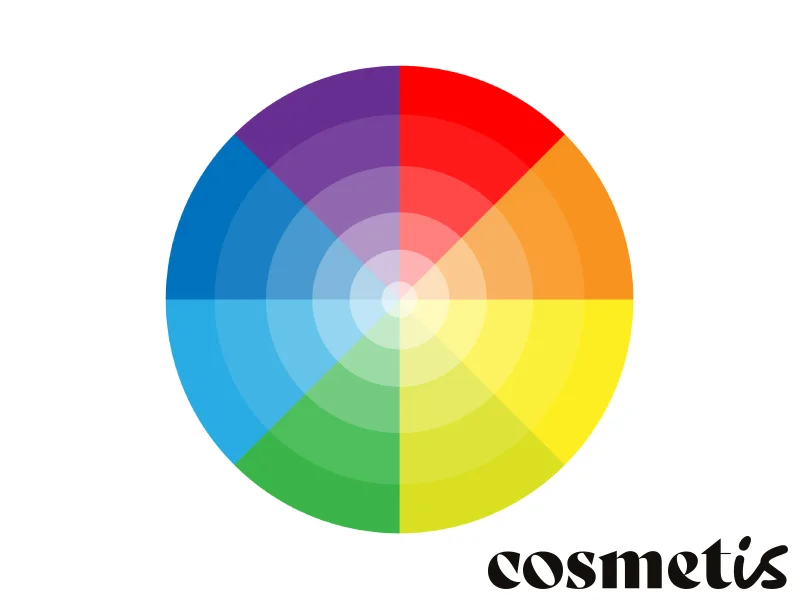
- Evaluate the color richness and texture of the toning shampoo
Dark-colored hair benefits from a highly pigmented formula with a thick consistency to ensure optimal results. If feasible, remove the shampoo bottle cap to visually inspect the product before making a purchase.
Keep in mind that individuals with fine or thin hair may find a lighter-colored or less-pigmented toning shampoo more suitable.
Formulas with higher pigment concentration have the potential to tint the hair, especially with daily use. For instance, continuous use of a deeply pigmented purple toning shampoo may result in a light purple tint. However, using the shampoo once a week should not lead to hair tinting.
COSMETIS TIP: When you begin using a toning shampoo, start by using it just once a week to see how your hair reacts. Depending on your hair type and how much brassiness you’re trying to correct, you may need to use it more or less frequently.
FAQs
1. What is the difference between blue shampoo and purple shampoo?
Blue shampoo uses blue pigments and it is best suited for individuals with darker hair colors or those experiencing brassiness with orange undertones.
On the other hand, the purple shampoo uses purple/violet pigments and it is designed to eliminate yellow or gold tones in blonde, silver, or lightened hair, making it ideal for those with blonde, silver, or light brown hair.
2. How often should I use blue shampoo?
Use a toning shampoo once or twice a week to maintain color and combat dullness.
3. How long does it take for a toning shampoo to work?
It depends on the specifications of the shampoo and the porosity of the hair.
4. Does purple shampoo work on all hair colors?
No. For individuals with darker hair colors, using purple shampoo may not yield the desired results, as it is formulated to address the specific color issues associated with lighter hair.
5. Can purple shampoo make my hair purple?
No, it can’t. Purple shampoos are designed to neutralize warmth without altering the color of your hair.
6. How long should I leave blue shampoo in my hair?
You should let it sit for a few minutes (usually no more than five minutes) and rinse it out. Different products may have varying recommendations, so always follow the product´s instructions.
7. Should I use blue shampoo or purple shampoo for brassy hair?
The choice between blue shampoo and purple shampoo for brassy hair depends on your hair color. Blue shampoo helps neutralize orange tones and brassiness in dark hair while purple shampoo is well-suited for individuals with blonde, silver, or light brown hair.
8. Will blue shampoo or purple shampoo dry out my hair?
Blue shampoos are designed for darker hair may contain strong color-depositing agents, which might contribute to dryness, particularly if used excessively. Usually, purple shampoos are milder in terms of their dehydration potential. Using a conditioner suitable for your hair’s needs can help counteract potential dryness.
We recommend, for instance, Klorane Mango Conditioner or Kérastase Elixir Ultime Le Fondant Conditioner.
9. Can I mix blue shampoo and purple shampoo?
No, it is not recommended. Combining the two may diminish their distinct color-correcting qualities, leading to unpredictable results.
10. Can blue shampoo or purple shampoo strip my hair color?
No, it can’t. Toning shampoos, both blue and purple shampoos, are typically formulated to neutralize unwanted tones in the hair, such as brassiness in blondes or yellowness in gray hair without stripping away the hair color. However, it’s important to follow the instructions provided with the specific product to avoid any potential adverse effects.
Conclusion
Toning shampoos, which typically come in shades of purple and blue, help maintain your fresh-from-the-salon hair color!
If you’re looking to maintain the vibrancy and brilliance of your color-treated hair, toning shampoos are here to transform your hair care routine. Say goodbye to brassy tones, and unwanted undertones, and hello to stunning, refreshed locks.
While both types of shampoo work by utilizing color theory to neutralize unwanted tones (blue for orange tones and purple for yellow tones), the choice between them depends on the specific color concerns of the individual’s hair.
In summary, if you have brassy tones in dark or brown hair, opt for blue shampoo. For those with blonde or lightened hair, purple shampoo is more suitable.
Always follow the instructions on the product you choose, and consider performing a patch test to ensure compatibility with your hair.
It’s crucial to note that the efficacy of toning shampoos varies, so choose the one that suits your hair type best, and seek professional advice if necessary. Revel in the transformative effects and reap the rewards of toning shampoos – because you deserve nothing but the best for your hair! Go for it!
